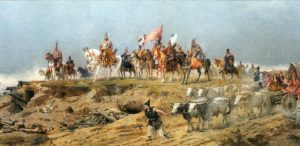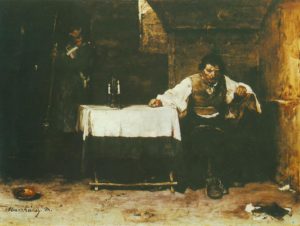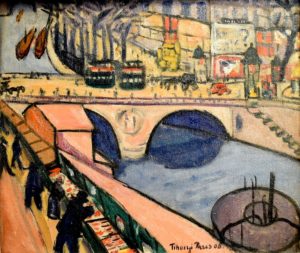The five most remarkable and iconic Hungarian paintings – PHOTOS

Hungarian art has always been famous for not just its architecture but paintings as well. The country is the homeland for many iconic and well-known painters, some of them even renowned all across the world. Among many pictures, these are the five most iconic ones.
Arrival of the Hungarians by Árpád Feszty (1892 – 1894)
The Arrival of the Hungarians (Hungarian: A magyarok bejövetele) is commonly known as Feszty Panorama or Feszty Cyclorama. It is a large cyclorama – a circular panoramic painting – depicting the beginning of the Hungarian conquest of the Carpathian Basin in 895. The picture was completed in 1894, and since 1995, the painting is displayed in the Ópusztaszer National Heritage Park. The painting is nearly 15 meters tall and almost 120 meters in length.

Death Row by Mihály Munkácsy
Completed in 1869 it is one of the most famous paintings by Munkácsy. The picture was awarded a gold medal one year later by The Salon (French: Salon), or rarely Paris Salon which was the official art exhibition of the Académie des Beaux-Arts in Paris. In 1872, Munkácsy painted the picture again but only with two persons and gave it the title The Last Day of a Condemned Man. Pain and understanding of pain were the two significant factors that played an essential part in Munkácsy’s work.


The Lonely Cedar by Tivadar Kosztka Csontváry
Painted in 1907, it is considered to be one of the few most remarkable masterpieces ever painted in history. Several studies revealed, the painting and the cedar itself symbolises the ancient Hungarian culture and history, for example, the arrival into the Carpathian Basin, our ancestors, eastern culture and the Hungarian faith.

Pont St. Michel (Paris) by Lajos Tihanyi
Tihanyi was a Hungarian painter and lithographer who achieved international recognition working outside Hungary, primarily in Paris, France. After emigrating in 1919, he never returned to Hungary. One of his most remarkable works is the Pont St. Michel painting which was completed in 1908. Tihanyi is known for a rare and abstract technique and rising international recognition on the European and American continent.

Lady in Violet by Pál Merse Szinyei
Painted in 1874, it is the most remarkable work of Szinyei. He began his studies at the Munich Academy in 1864; between 1867 and 1869 he was a pupil of Karl Piloty’s. Szinyei’s early sketches already revealed his search for new ways of expression. His friendship with his master, as well as that with Wilhelm Leibl and Hans Makart, left no mark on his Plein-air painting. His works are considered to be the earliest examples of Hungarian and Central European Impressionism.

Source: Daily News Hungary







